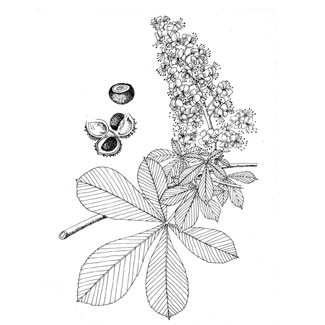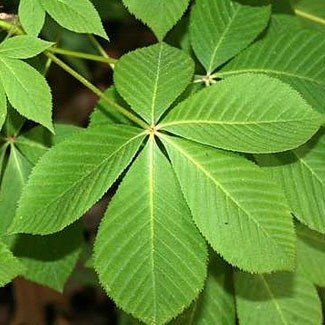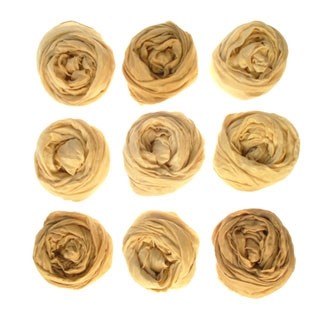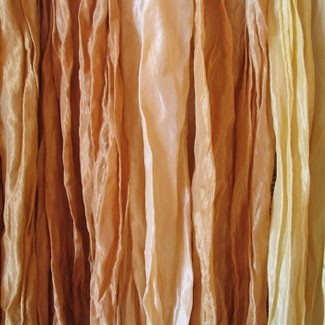| Horse chestnut
Aesculus hippocastanum L.
The Plant
Tree belonging to the Sapindaceae originating in Asia and introduced in Europe in the 16th century for cultivation as an ornamental plant. It is a majestic tree with caducous leaves, rounded and shady foliage, up to twenty-five meters high.
The extract from its bark was used for dyeing wool obtaining more or less yellow shades; a cinnamon color was achieved with a decoction of young branches and leaves.
Usage
For dyeing, the prickly capsules of the fruit, gathered in October – November , and the leaves, gathered in September – October, are used.
Both fresh and dried leaves can be used. The drying process is done in a ventilated environment.
Color characteristics
Excellent resistance to light and washing in water.
Bibliography
Franco Brunello “ L’arte della tintura nella storia dell’umanita” Neri Pozza editore – Vicenza;
Gunter Meier ” Colori vegetali. Ricerca, produzione, utilizzo” Associazione Casanova
The Plant
Tree belonging to the Sapindaceae originating in Asia and introduced in Europe in the 16th century for cultivation as an ornamental plant. It is a majestic tree with caducous leaves, rounded and shady foliage, up to twenty-five meters high.
The extract from its bark was used for dyeing wool obtaining more or less yellow shades; a cinnamon color was achieved with a decoction of young branches and leaves.
Usage
For dyeing, the prickly capsules of the fruit, gathered in October – November , and the leaves, gathered in September – October, are used.
Both fresh and dried leaves can be used. The drying process is done in a ventilated environment.
Color characteristics
Excellent resistance to light and washing in water.
Bibliography
Franco Brunello “ L’arte della tintura nella storia dell’umanita” Neri Pozza editore – Vicenza;
Gunter Meier ” Colori vegetali. Ricerca, produzione, utilizzo” Associazione Casanova




